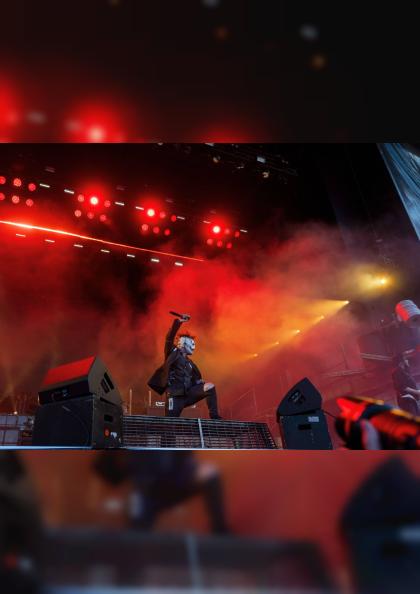Subtitling vs Dubbing: Which is Better for Your YouTube Videos?
Are you a content creator who wants to reach a wider audience by translating your YouTube videos? If so, you may be wondering whether to use subtitles or dubbing. Both options have their advantages and challenges, and choosing the right one depends on your goals, budget, and audience preferences.
In this article, we'll explore the best practices for subtitling and dubbing YouTube videos. We'll discuss the benefits and challenges of each method, the available technologies and equipment, and how to budget for translation. By the end of this article, you'll be ready to take your YouTube channel to the next level and connect with viewers around the world.
Subtitling vs Dubbing: Which is Better for Your YouTube Videos?
Are you a content creator who wants to reach a wider audience by translating your YouTube videos? If so, you may be wondering whether to use subtitles or dubbing. Both options have their advantages and challenges, and choosing the right one depends on your goals, budget, and audience preferences.
In this article, we'll explore the best practices for subtitling and dubbing YouTube videos. We'll discuss the benefits and challenges of each method, the available technologies and equipment, and how to budget for translation. By the end of this article, you'll be ready to take your YouTube channel to the next level and connect with viewers around the world.

Why Bother in the First Place?
There are several reasons why translating YouTube videos with subbing and dubbing can benefit content creators. Firstly, it increases their potential audience by reaching viewers who may not speak the original language of the video. This can lead to more views, likes, and subscribers, which can ultimately help with monetization and growth.
Secondly, translation can also help with accessibility for viewers with hearing impairments or those who prefer to watch videos with subtitles or dubbed audio. By offering translated versions, content creators can make their content more inclusive and open up their channel to a wider audience.
Finally, subbing and dubbing can also enhance the professional quality and credibility of a YouTube channel. By providing high-quality translations, content creators can demonstrate a commitment to excellence and stand out in a crowded and competitive online space.
Why Bother in the First Place?
There are several reasons why translating YouTube videos with subbing and dubbing can benefit content creators. Firstly, it increases their potential audience by reaching viewers who may not speak the original language of the video. This can lead to more views, likes, and subscribers, which can ultimately help with monetization and growth.
Secondly, translation can also help with accessibility for viewers with hearing impairments or those who prefer to watch videos with subtitles or dubbed audio. By offering translated versions, content creators can make their content more inclusive and open up their channel to a wider audience.
Finally, subbing and dubbing can also enhance the professional quality and credibility of a YouTube channel. By providing high-quality translations, content creators can demonstrate a commitment to excellence and stand out in a crowded and competitive online space.
Subtitling vs Dubbing: Pros and Cons
Subtitling and dubbing are the two most common ways to translate audiovisual content. Subtitling involves adding text at the bottom of the screen that matches the audio in the original language. Dubbing, on the other hand, involves replacing the original audio with a new audio track in the target language.
The main advantage of subtitling is that it's less expensive and faster than dubbing. It also allows viewers to hear the original audio and tone of the speaker's voice. However, it requires viewers to be able to read the subtitles. Some viewers may find it challenging to keep up with the subtitles, especially if they are reading in a language that is not their native tongue. Subtitles can also be distracting, especially if they're poorly timed or formatted.
Dubbing, on the other hand, is more expensive and time-consuming than subtitling. It also requires more specialized skills and equipment, such as a recording studio and voice actors. However, it provides a more immersive experience for viewers, as they can hear the dialogue in their own language without having to read subtitles. Dubbing also makes the video accessible to people who are blind or visually impaired. However, dubbing may require precise lip-syncing, which can be challenging, especially if the original video features fast-paced dialogue or complex visual elements.
Best Practices of Translation
If you decide to go with subtitling, here are some best practices to keep in mind:
-
Use clear, easy-to-read fonts that are large enough to be legible on small screens.
-
Time the subtitles so they match the audio as closely as possible.
-
Use proper grammar and punctuation to ensure accuracy and clarity.
-
Avoid placing subtitles over important visuals or text on the screen.
-
Consider adding closed captions in addition to subtitles, so that viewers who are deaf or hard of hearing can access your content.
-
Try out different software tools to create subtitles, such as YouTube's built-in subtitle editor, Amara, and Subtitle Edit. You can also hire a professional subtitling service to handle the process for you.
If you choose to go with dubbing, here are some best practices to keep in mind:
-
Hire professional voice actors who are native speakers of the target language.
-
Use high-quality recording equipment and a soundproof studio to ensure clear audio.
-
Ensure that the voice actors are matched to the tone and style of the original speaker.
-
Pay attention to lip sync and timing to make the dubbing look natural and seamless.
-
Allow time for the script translation and recording process, which can take several weeks or months.
-
There are many dubbing studios and services available, such as BTI Studios, Deluxe, and SDI Media. You can also hire freelance voice actors and recording engineers to handle the process.
Budgeting for Translation
While subtitling and dubbing are great ways to make your content accessible to a wider audience, they can come at a cost. It's important to budget accordingly to ensure that you can cover the expenses associated with translation.
The cost of translation can vary greatly depending on the language, the length of the video, and the quality of the translation. When it comes to subtitling, the cost is usually calculated based on the number of minutes of video and the number of words per minute. On the other hand, dubbing is usually priced per minute of audio.
Another factor to consider is the cost of hiring a professional translator or voice actor. While there are online tools that can help you translate your content, it's often best to work with a professional who can ensure accuracy and quality.
To budget for translation, you should research the average cost of translation services for the languages you plan to translate your content into. This can help you estimate how much it will cost to translate your content on a per-video basis. It's also important to keep in mind that translation is an ongoing expense, so you should plan to budget for it as a recurring cost.
If you're just getting started and don't have the budget for professional translation, you can consider using machine translation tools like Google Translate. While these tools are not as accurate as human translation, they can provide a basic understanding of the content and make it accessible to a wider audience.
In conclusion, translating your YouTube content is a great way to reach a wider audience and grow your channel. Whether you choose to use subtitles or dubbing, it's important to consider the benefits and challenges of each method and budget accordingly to ensure that you can cover the cost of translation.
Subtitling vs Dubbing: Pros and Cons
Subtitling and dubbing are the two most common ways to translate audiovisual content. Subtitling involves adding text at the bottom of the screen that matches the audio in the original language. Dubbing, on the other hand, involves replacing the original audio with a new audio track in the target language.
The main advantage of subtitling is that it's less expensive and faster than dubbing. It also allows viewers to hear the original audio and tone of the speaker's voice. However, it requires viewers to be able to read the subtitles. Some viewers may find it challenging to keep up with the subtitles, especially if they are reading in a language that is not their native tongue. Subtitles can also be distracting, especially if they're poorly timed or formatted.
Dubbing, on the other hand, is more expensive and time-consuming than subtitling. It also requires more specialized skills and equipment, such as a recording studio and voice actors. However, it provides a more immersive experience for viewers, as they can hear the dialogue in their own language without having to read subtitles. Dubbing also makes the video accessible to people who are blind or visually impaired. However, dubbing may require precise lip-syncing, which can be challenging, especially if the original video features fast-paced dialogue or complex visual elements.
Best Practices of Translation
If you decide to go with subtitling, here are some best practices to keep in mind:
-
Use clear, easy-to-read fonts that are large enough to be legible on small screens.
-
Time the subtitles so they match the audio as closely as possible.
-
Use proper grammar and punctuation to ensure accuracy and clarity.
-
Avoid placing subtitles over important visuals or text on the screen.
-
Consider adding closed captions in addition to subtitles, so that viewers who are deaf or hard of hearing can access your content.
-
Try out different software tools to create subtitles, such as YouTube's built-in subtitle editor, Amara, and Subtitle Edit. You can also hire a professional subtitling service to handle the process for you.
If you choose to go with dubbing, here are some best practices to keep in mind:
-
Hire professional voice actors who are native speakers of the target language.
-
Use high-quality recording equipment and a soundproof studio to ensure clear audio.
-
Ensure that the voice actors are matched to the tone and style of the original speaker.
-
Pay attention to lip sync and timing to make the dubbing look natural and seamless.
-
Allow time for the script translation and recording process, which can take several weeks or months.
-
There are many dubbing studios and services available, such as BTI Studios, Deluxe, and SDI Media. You can also hire freelance voice actors and recording engineers to handle the process.
Budgeting for Translation
While subtitling and dubbing are great ways to make your content accessible to a wider audience, they can come at a cost. It's important to budget accordingly to ensure that you can cover the expenses associated with translation.
The cost of translation can vary greatly depending on the language, the length of the video, and the quality of the translation. When it comes to subtitling, the cost is usually calculated based on the number of minutes of video and the number of words per minute. On the other hand, dubbing is usually priced per minute of audio.
Another factor to consider is the cost of hiring a professional translator or voice actor. While there are online tools that can help you translate your content, it's often best to work with a professional who can ensure accuracy and quality.
To budget for translation, you should research the average cost of translation services for the languages you plan to translate your content into. This can help you estimate how much it will cost to translate your content on a per-video basis. It's also important to keep in mind that translation is an ongoing expense, so you should plan to budget for it as a recurring cost.
If you're just getting started and don't have the budget for professional translation, you can consider using machine translation tools like Google Translate. While these tools are not as accurate as human translation, they can provide a basic understanding of the content and make it accessible to a wider audience.
In conclusion, translating your YouTube content is a great way to reach a wider audience and grow your channel. Whether you choose to use subtitles or dubbing, it's important to consider the benefits and challenges of each method and budget accordingly to ensure that you can cover the cost of translation.































